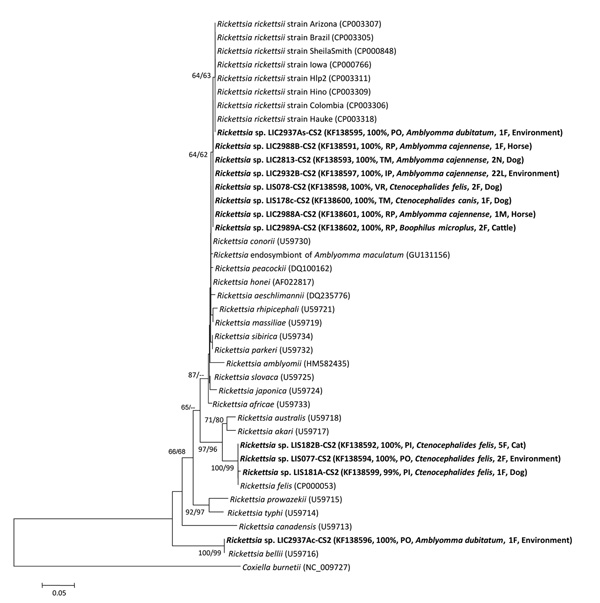Volume 20, Number 3—March 2014
Letter
Rickettsia and Vector Biodiversity of Spotted Fever Focus, Atlantic Rain Forest Biome, Brazil
Figure

Figure. . . Phylogenetic inferences by neighbor-joining method from 1,000 replicated trees based on partial sequence of the Rickettsia gltA gene (CS2 401 bp). Evolutionary distances were estimated by the Kimura 2-parameter model. Bootstrap values >60% are shown (neighbor-joining/maximum-parsimony). Sequences obtained are in boldface, and GenBank accession numbers are in parentheses, followed by the similarity percentage (BLAST, http://blast.ncbi.nlm.nih.gov), the locality acronym (PO, Porciúncula; RP, São José do Vale do Rio Preto; TM, Trajano de Moraes; IP, Itaperuna; VR, Volta Redonda; PI, Piraí), the arthropod vector species, the composition of the sample (L, larvae; N, nymph; F, female; M, male), and the host. Scale bar indicates nucleotide substitutions per site.
1These authors contributed equally to this article.